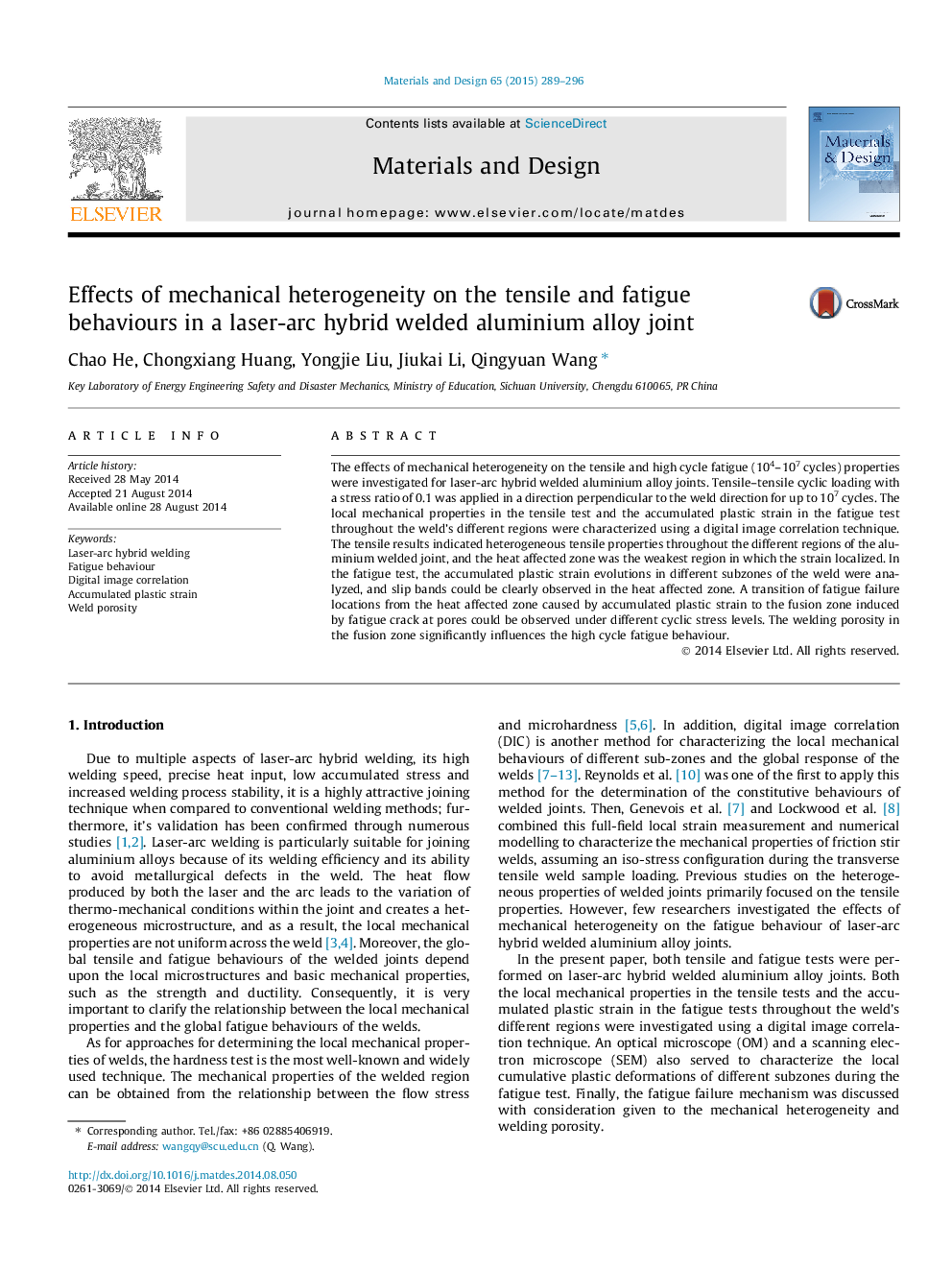| Article ID | Journal | Published Year | Pages | File Type |
|---|---|---|---|---|
| 828808 | Materials & Design (1980-2015) | 2015 | 8 Pages |
•Full field strain evolution was characterized using DIC method in fatigue test.•The differences of fatigue failure mechanism between HAZ and FZ were discussed.•Porosity in FZ significantly influenced high cycle fatigue behaviours of the weld.
The effects of mechanical heterogeneity on the tensile and high cycle fatigue (104–107 cycles) properties were investigated for laser-arc hybrid welded aluminium alloy joints. Tensile–tensile cyclic loading with a stress ratio of 0.1 was applied in a direction perpendicular to the weld direction for up to 107 cycles. The local mechanical properties in the tensile test and the accumulated plastic strain in the fatigue test throughout the weld’s different regions were characterized using a digital image correlation technique. The tensile results indicated heterogeneous tensile properties throughout the different regions of the aluminium welded joint, and the heat affected zone was the weakest region in which the strain localized. In the fatigue test, the accumulated plastic strain evolutions in different subzones of the weld were analyzed, and slip bands could be clearly observed in the heat affected zone. A transition of fatigue failure locations from the heat affected zone caused by accumulated plastic strain to the fusion zone induced by fatigue crack at pores could be observed under different cyclic stress levels. The welding porosity in the fusion zone significantly influences the high cycle fatigue behaviour.
